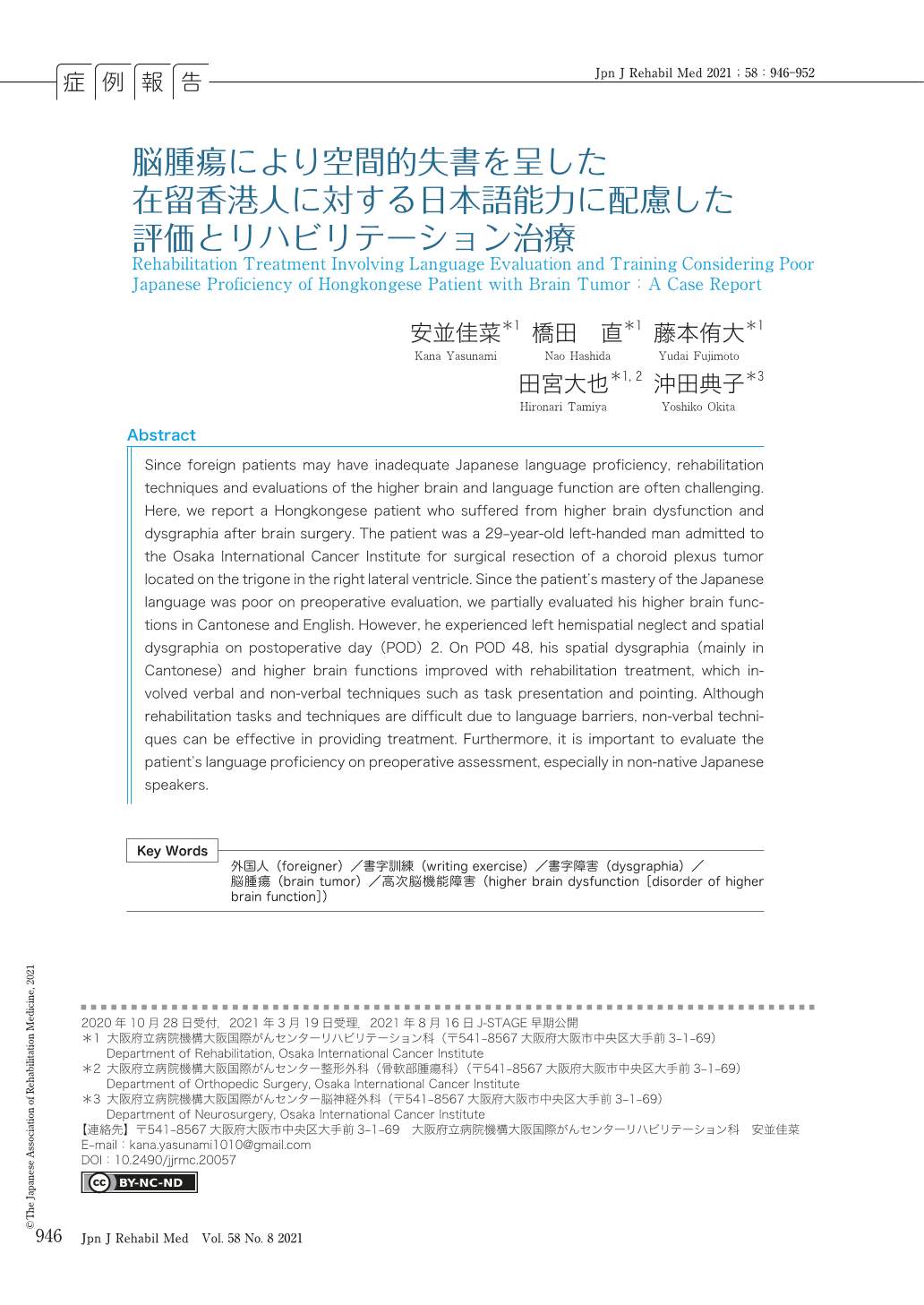Japanese
English
- 販売していません
- Abstract 文献概要
- 1ページ目 Look Inside
- 参考文献 Reference
はじめに
開頭腫瘍摘出術では腫瘍をできる限り摘出することが生命予後の延長につながる1).一方で,術後の高次脳機能障害は後のquality of life(QOL)や生存期間との関連が報告されており2),時期に合わせた定量的評価が重要である.特に若年者では術後の機能低下が就学・就労の可否に影響し得る3).
2019年の統計では在留外国人の人口は280万人で毎年増加傾向にあり4),外国語話者の失語症者に対する言語聴覚療法実施有無の判断基準として,通訳者の有無・重症度・その言語の情報の入手しやすさが挙げられている5).また,重度失語症者は課題の難易度が低く設定できるため,実施が容易であるとし,軽度〜中等度失語症者の言語聴覚療法実施はその言語を未学習の療法士では困難とされている5).一方で,在留外国人の書字障害や非失語症者についての報告はごく少数で,認知リハビリテーション実施の判断基準や評価法,治療の内容については,今のところ確立されたものはない.
今回,右側脳室三角部脈絡叢乳頭腫に対する開頭腫瘍摘出術後に左半側空間無視による空間性失書を呈した左利きマルチリンガルの在留香港人症例を経験した.術前の日本語能力の把握と,非言語情報を加えたリハビリテーション治療が効果的であった症例をここに報告する.
Since foreign patients may have inadequate Japanese language proficiency, rehabilitation techniques and evaluations of the higher brain and language function are often challenging. Here, we report a Hongkongese patient who suffered from higher brain dysfunction and dysgraphia after brain surgery. The patient was a 29-year-old left-handed man admitted to the Osaka International Cancer Institute for surgical resection of a choroid plexus tumor located on the trigone in the right lateral ventricle. Since the patient's mastery of the Japanese language was poor on preoperative evaluation, we partially evaluated his higher brain functions in Cantonese and English. However, he experienced left hemispatial neglect and spatial dysgraphia on postoperative day (POD) 2. On POD 48, his spatial dysgraphia (mainly in Cantonese) and higher brain functions improved with rehabilitation treatment, which involved verbal and non-verbal techniques such as task presentation and pointing. Although rehabilitation tasks and techniques are difficult due to language barriers, non-verbal techniques can be effective in providing treatment. Furthermore, it is important to evaluate the patient's language proficiency on preoperative assessment, especially in non-native Japanese speakers.

Copyright © 2021, The Japanese Association of Rehabilitation Medicine. All rights reserved.


